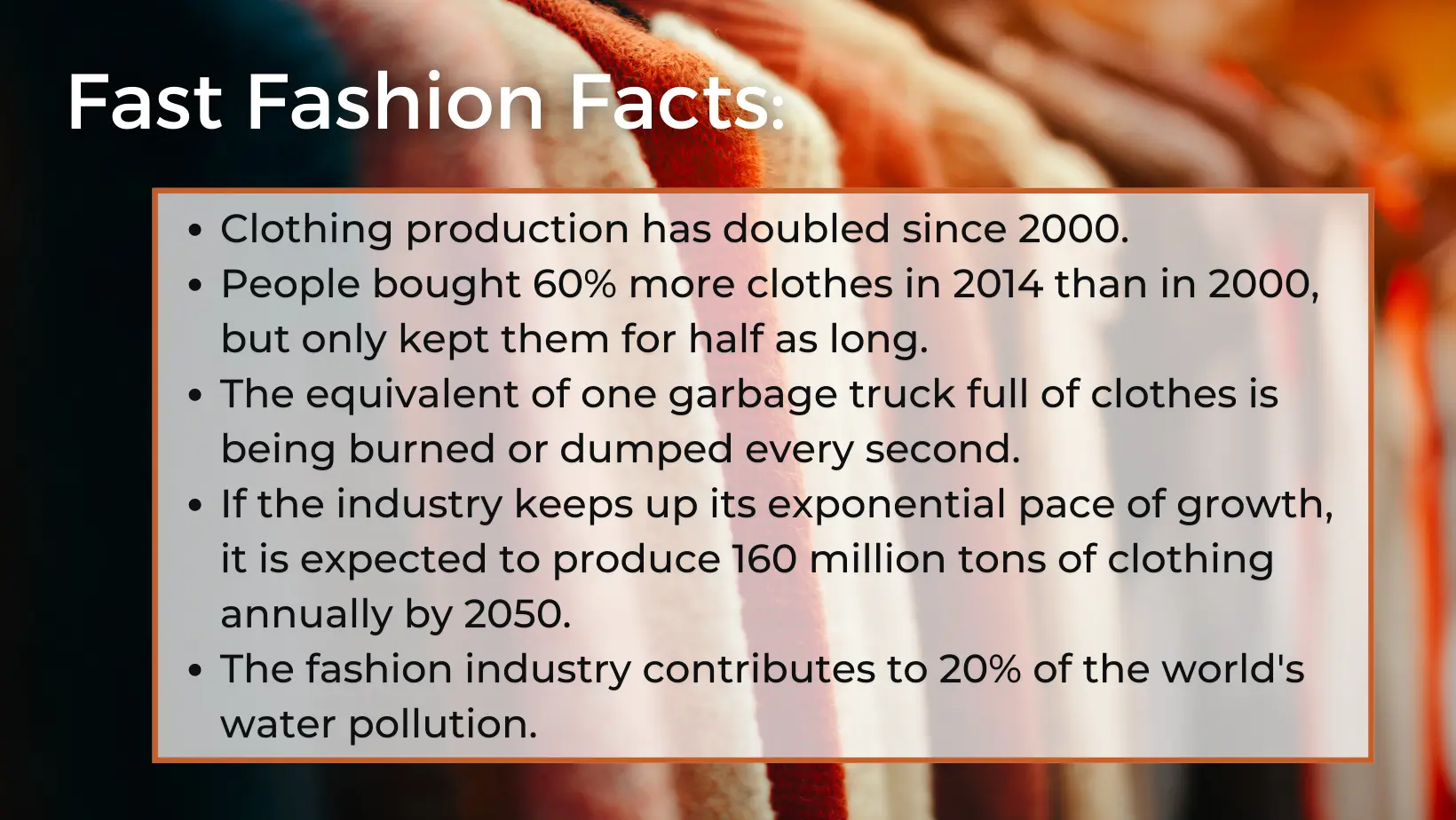How to Avoid Fast Fashion: Things You Need to Know
I wanted to give you a really thorough breakdown of how to avoid fast fashion. As you mentioned recently being more interested in sustainable clothing options, I think delving into this topic could be hugely helpful for shopping more ethically. Fast fashion has some serious environmental and social impacts that I think are worth learning about in depth.
How to Avoid Fast Fashion
Let’s read more about it, and understand it.
What Exactly is Fast Fashion?
To start, let’s define what fast fashion refers to. At its core, fast fashion is a business model used by many mainstream clothing retailers where new product lines are constantly being introduced and pushed based on the latest trends seen on runways or in magazines. Brands operating on this model aim to get runway designs into stores within a matter of weeks rather than the usual 6 month lag time.
This allows fast fashion companies like Zara, H&M, and Forever 21 to constantly churn out new collections that follow whatever is deemed “in” at that moment. While it gives consumers access to trendy styles at affordable prices, this ultrarapid production cycle comes at huge ethical and environmental costs that aren’t always apparent.
The Major Problems With Fast Fashion
There are a few key issues that arise from the fast fashion business model:
- Environmental impact – With clothing lines turning over so quickly, garments are essentially designed and manufactured to be throwaway items worn only a few times before being discarded. All that textile waste ends up clogging landfills and releasing microplastics and greenhouse gases as it breaks down over decades. Producing clothing also uses immense amounts of nonrenewable resources like water, energy, chemicals and dyes that pollute the air and waterways.
- Poor working conditions – The frenetic pace of designing and churning out new clothing collections every couple weeks puts intense pressure on suppliers and workers further down the supply chain. Long hours, low pay, lack of benefits, and few worker protections are common in the crowded fast fashion factories and workshops. Exposure to harmful chemicals without proper safety equipment also takes its toll.
- Exploitative practices – In some cases, fast fashion companies have been accused of exploiting developing countries for cheap labor. There have been reported issues like illegally low wages, child labor, and severe environmental damage left behind by textile dyeing and fabric production facilities overseas.
- Encourages excessive consumerism – With new merchandise arriving continuously, fast fashion subtly shifts the culture towards constant trend-chasing consumerism. People end up buying more single-use outfits than they need since the prices are low but quality is lacking. This overconsumption puts further strain on natural resources and adds to the mountains of waste.
- Undermines artisanal makers – The ultra-fast production cycle gives huge fast fashion brands the ability to reproduce unique runway designs before smaller designers have a chance to bring them to market. This makes it hard for independent makers and artisans to compete or earn a living through their creativity and skills.
With all these alarming environmental and ethical impacts in mind, it’s clear there are good reasons why conscientious shoppers want to avoid directly supporting fast fashion companies when possible. But going completely “fast fashion free” can seem daunting, so what are some practical ways to opt out?
READ: What Fashion Style Was Really Popular in the 80s?
How to Avoid Fast Fashion: Tips for Conscious Consumers
Here are some simple strategies that can help minimize your contribution to the problems of fast fashion:
Buy Less, But Buy Better
Instead of constantly adding to your wardrobe, strive to invest in versatile, high-quality basics that will stand the test of time. Look for garments made from natural, longer-lasting fabrics like cotton, wool, linen and leather rather than cheaper synthetic blends. Everything you buy will get much more wears this way before needing replacing.
Shop Secondhand First
Thrift stores, consignment shops, and used clothing sites like Poshmark, Depop and ThredUP are goldmines for pre-loved fashion finds. You can put new styles in your closet without generating any new demand. Selling your old clothes online also lets you extend their usable lifespan even further.
Know Your Brands
Do some research into clothing companies’ supply chain transparency and sustainability practices. Small independent designers and B-Corps tend to have stronger ethical foundations than fast fashion giants. Make supporting them part of your budget whenever possible.
Get to Know Your Local Makers
Every city has artisans bringing unique, made-to-order garments to life. Drop into a boutique, follow Indie designers on social media, or check sites like Etsy to connect with creators in your area. Custom orders through small businesses keep more dollars circulating locally.
Mend What You Have
Learning basic sewing, darning or hemming skills means repairs don’t require throwing items out. Tailors offer alterations too, to refresh aging clothes and adapt them to your current style over time. This greatly extends usable life.
Swap With Friends
Gather a group to do clothing swaps or donations 2-3 times per year. Everyone gets new-to-them outfits without adding demand. Group shopping trips also make sustainable fashion more social and fun!
Rent For Special Occasions
For events where you’ll only wear an item once or twice, consider renting through services like Rent the Runway. This eliminates wasting resources on clothing you don’t plan to keep long term.
Support Brand Transparency
Addressing issues in the fashion supply chain requires real accountability. Follow companies demonstrating leadership through ethical certifications, fair wage commitments, supply chain mapping efforts and more. Voting with your dollars compels positive change sector wide.
Get Politically Active
Lobbying for stronger labor protections, green manufacturing standards and take-back/recycling policies creates comprehensive solutions beyond individual action. Consider joining or donating to advocacy groups working on these issues.
Those are some of the strategies I’ve found most effective personally for avoiding perpetuating fast fashion’s harms just through more conscious purchasing habits alone.
Of course, opting out is a process – so ease yourself into changes at your own pace and don’t feel bad about slip ups along the way. The important thing is continually striving to make improvements every chance you get. And now that you have these tips, let me know if you have any other questions!
Conclusion
In conclusion, fast fashion has become the dominant force in retail, but conscientious consumers have the ability to opt out and vote with their dollars for ethical production. By buying less frequently but shopping sustainably through thrifting, swapping and supporting small local brands, each individual makes a difference.
Along with spreading awareness, being politically active on industry-wide policy reform takes the solution beyond personal responsibility alone. With some creative problem-solving and community support, avoiding fast fashion’s harms while expressing personal style freely is absolutely possible.
I encourage you to give these strategies a try and let the journey unfold at your own pace – reducing impact is what matters most.
_______________________________
Frequently Asked Questions About Avoiding Fast Fashion
Is fast fashion really that bad?
Yes, the environmental footprint and labor issues are severely concerning when you look at the scale of production. Opting for slower, ethical brands makes a tangible difference even if choices can’t be perfect.
Isn’t secondhand still fast fashion?
Used clothing from unknown origins could possibly be castoffs from fast brands. But thrifting and swapping diverges demand away from new production either way. And used is always greener than made-new.
What if I can’t afford ethical brands?
Small changes like mending, thrifting and swaps don’t require big spending. Learn about community resources too – libraries lend tools & skills. And companies focused on accessibility are growing fast.
How can I style without trends?
Focus on quality staples in your favorite colors. Follow artists, not advertisers. Find your signature look and self-expression through mixing of patterns and silhouettes rather than logos. Trends will come and go – your style is timeless.
Does slow fashion have to be boring?
Absolutely not! Small brands showcase infinite creativity and local artisans add uniqueness. Following diverse indie designers broadens your scope beyond what fast retail pushes. Individuality is so much more interesting than uniform trends.









